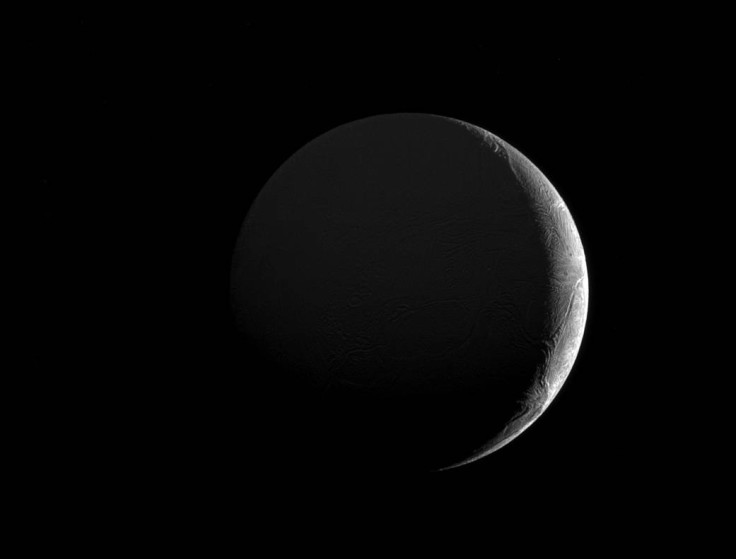Cassini captures a crescent-shaped Enceladus showing fractures and furrows on its icy surface
The view was captured by Cassini at a distance of approximately 168,000 kms from Enceladus.

An image captured by the Cassini spacecraft of Saturn's sixth-largest moon Enceladus was released by Nasa showing a slim crescent of sunlight falling on it, highlighting fractures and furrows on its icy surface.
The image was captured at a distance of approximately 168,000km from Enceladus with its narrow-angle camera on 26 December 2016. It portrays a view that looks towards the Saturn-facing hemisphere of the moon and the crescent formed is dimly illuminated by a low angle of sunlight reflected off Saturn.
Cassini, a cooperative project of Nasa, ESA (the European Space Agency) and the Italian Space Agency is slated to retire this year by plunging into the Saturn's thick atmosphere sometime during September.
The orbiter has observed and transmitted some path breaking data, including the recent discovery of Enceladus' discovery of possible hydrothermal activity on its sub-surface ocean floor indicating a potential oasis of habitability. It has also captured other moons of Saturn including the mammoth Titan and the saucer shaped Atlas.
Before its final plunge, Cassini is on its way to complete its "grand finale" phase of its mission — a series of 22 orbitals between Saturn's cloud. Last month it managed to capture shots from deep inside Saturn's rings, a territory where no space cam or craft has venture into before.
© Copyright IBTimes 2025. All rights reserved.





















